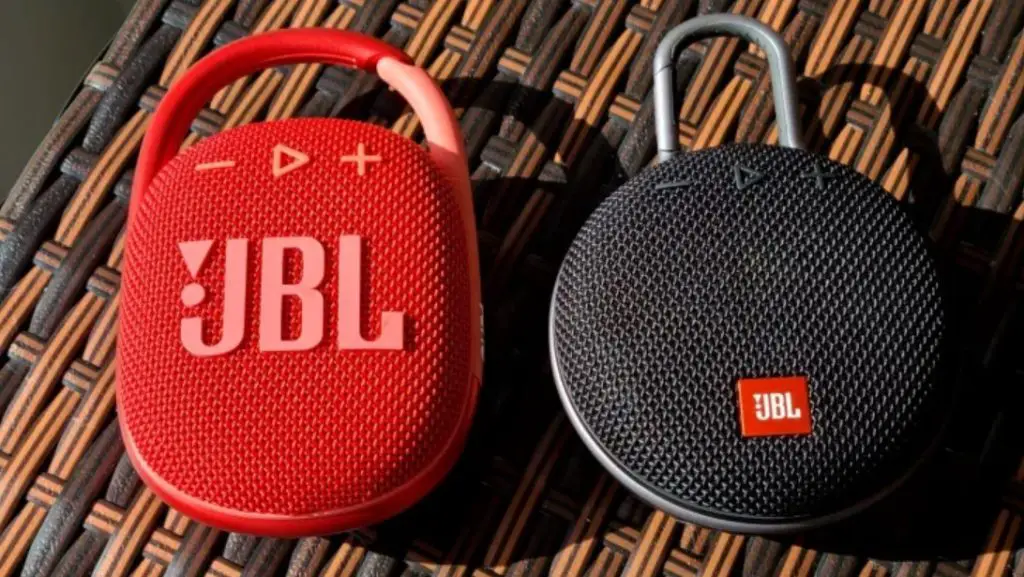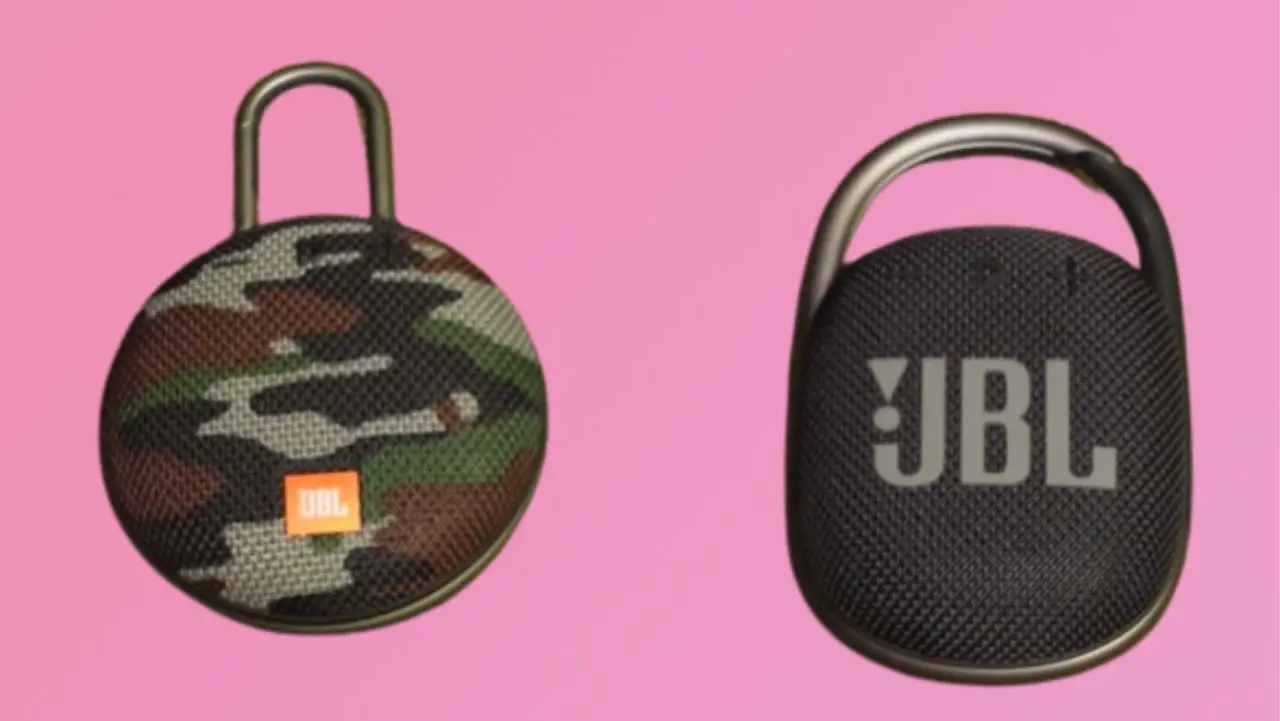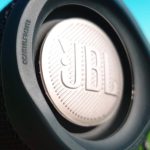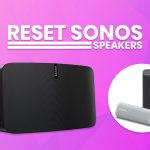Preparing for a hiking trip, you realize you need a portable speaker and find yourself choosing between the JBL Clip 3 and Clip 4 at a store. Both speakers appear impressive, but you want the best for a memorable trip. Unsure of their features, you decide to leave the store and take a moment to research and make an informed decision. Now, with a clear mind, you’re ready to dive into a detailed comparison to determine which speaker is the better choice for your adventure. Let’s get started!
What is the difference between Clip 3 and Clip 4
The JBL Clip series is renowned for its portability, lightweight design, and impressive sound quality, making it a great companion for long travels. In this comparison, we focus on the JBL Clip 3 and Clip 4 to help you determine which speaker best suits your needs. Let’s delve into the specifics to see which model emerges as the top choice.
Build Quality:
The first thing you get to judge when you look at these two speakers is the build quality and design language. Of course, the looks do make an impression!

Both speakers have a mesh covering at the front and back to protect the sound driver from dust and water; however, Clip 4 extends this protection by having mesh coverings on both the front and back. It also has textured rubber padding at the backside, allowing the speaker to be placed on a table while playing music. In addition, the rubber body and mesh of both Clip 3 and 4 prevent them from minor or accidental drops.
Both speakers have a carabiner attached to them and a metal strap that allows the user to hang the speaker with a bag or wall. The button control of both speakers is at the front of the speaker, which allows easy controls like volume up and down, power, and Bluetooth pairing.
So, both audio titans, Clip 3 and 4 stand shoulder to shoulder, refusing to let the other one surpass them.
Dimensions:
There is not much difference between the dimensions of Clip 3 and Clip 4, which is why they are considered equally suitable for trips and easy-to-carry options. The Clip 3 weighs about 0.22 kg, whereas its younger sibling weighs slightly more, i.e., 0.24 kg. The difference in weight isn’t a lot, but still, Clip 3 is slightly lightweight, making it more portable.
Now, about the size, the length of Clip 3 is about 5.4 inches; height is 3.8 inches, and depth is 1.8 inches. Compared to this, Clip 4 is slightly different, i.e., length: 5.3 inches, height: 3.4 inches, and depth: 1.8 inches.
In a blind test, you would likely not notice the size difference between the two speakers.
Features:
First, both speakers offer Bluetooth connectivity to stream music from any audio source supporting this connection. However, Clip 3 comes with an extra Aux 3.5 mm cable input, allowing the user to connect the speaker with a device through an Aux cable; the younger sibling, Clip 4, doesn’t have this luxury.
In addition, the Clip 3 also has a built-in microphone, so if you’re listening to your favorite song streaming from your mobile and you receive a call from your mom or dad, you wouldn’t want to miss that call. In normal cases, you’ll have to disconnect the speaker from the mobile and attend the call. However, with Clip 3, you can simply attend the call while it’s still connected to the speaker because of the built-in microphone facility. Whereas, Clip 4 doesn’t offer this cool feature. For those who are budget-conscious but still want quality features, you might want to check out our list of the best budget Bluetooth speakers.
Another important feature you might be looking for is connecting one Clip speaker to another for a better and more booming audio impact. Unfortunately, this JBL speaker series doesn’t offer Partyboost mode or a connect feature to connect a chain of speakers.
Now, let’s talk about the sturdiness!
JBL Clip 3 has an IPX7 rating, meaning it’s waterproof and can be submerged for 30 minutes without damage. However, Clip 4 takes this protection to another level with its IP67 rating, which means that not only you can submerge it into the water for 30 minutes just like its older sibling, but it’s also safe to use this speaker in dusty or muddy areas, as it’s completely dust-resistant.
So, in this round, the older sibling, Clip 3, takes the lead because of its cool features and benefits, which the younger one doesn’t have.
Connectivity:
As we know, both the JBL speakers, Clip 3 and 4, are Bluetooth speakers, allowing users to set up a wireless connection between an audio source and the speaker. However, the Clip 3 also comes with an Aux 3.5mm cable input, which means if you want to connect a device with a speaker that doesn’t support Bluetooth connection, you can use the Aux input to enjoy music streaming from that device.
Both the speakers have a different version of Bluetooth, i.e., Clip 3 uses Bluetooth 4.1, whereas the new kid in the block: Clip 4, uses Bluetooth 5.1. Generally, newer technology offers improvements.
The same is true here; with Bluetooth 5.1, Clip 4 offers an improved and better connectivity range, less connectivity time, and better audio connection. It doesn’t mean that Clip 3 is not doing a good job; Clip 3 also provides a stable Bluetooth connection between the speaker and audio source; however, the range of connection and connectivity time is not as sleek as Clip 4.
Battery Life:
Now, let’s talk about battery life. You wouldn’t want your speaker to run out of battery when you’re far from a power source.
Both the speakers, Clip 3 and 4 use a 1000mAh Lithium-ion Polymer, rechargeable battery with a battery life of about 10 hours. The charging time for both the speakers is the same too, i.e., 3 hours for a complete charge. The battery life may change depending on the volume and type of music you’re playing. However, the Clip 4 comes with an additional feature of power-saving mode, which increases the speaker’s use to a full day unless the speaker’s volume is above 75%.
Portability:
You don’t want to carry something that’s a burden for you throughout the trip and doesn’t let you enjoy the trip to the fullest. Clip 3 and 4 are highly portable because of their lightweight, compact size and design, and Carabiner, which allows you to hang the speaker to the bag easily.
However, Clip 4 is a better choice because of its IP67 rating, making it water- and dust-resistant. It also has a power-saving mode, which helps extend the battery life to a full day for volume below 75%. It also has a sturdy design and rubber body, which prevents the speaker against accidental drops.
Sound Quality:
No one wants a speaker that delivers poor sound quality.
I’m sure nobody is up for this type of torment, so it’s important to consider the sound quality of both speakers before picking one for your trip.
Now, don’t be deceived by the size of these speakers, as they deliver bombastic and impressive audio for their size. Clip 3 has an impressive audio response with decent bass and mid-range frequency output. It has a frequency range of 120Hz-20KHz. However, for audio that has a high-bass response, this speaker might start cracking the audio.
On the other hand, Clip 4, with a frequency response range of 100Hz to 20KHz, has an impressive bass response and delivers pretty decent mid and high-range frequency audio too. Furthermore, it is a little louder, with a power output of 5 watts, and clearer than its older sibling, which only has a power output of 3.3 watts. So, if you compare their audios from across the yard, JBL Clip 4 would stand as a winner without any crown!
In addition, when submerged in water, Clip 3 may produce audio that sounds a bit muffled until the water evaporates. However, Clip 4 would sound perfectly alright, completely unbothered by the water.
Pricing and Availability:
Of course, you want the best, but you must also check your pocket. You wouldn’t want to go broke before your trip even started!
So, getting a speaker that comes within your budget is better. Now, the price of these speakers may vary depending on the location of purchase, the color, ongoing promotions and discounts, and the retailer. The price range of JBL Clip 3 is about $50-$70, whereas its younger sibling is a bit expensive, i.e., $60-$80.
So, you may choose one according to your budget.
Usability: Clip 3 Vs. Clip 4
Now, let’s consider the usability and suitability of these speakers in different use case scenarios and see which one would be more versatile and usable in multiple scenarios.
- Beaches: Going on a beach day out? Well, you would definitely want some music, but you would not want your speaker to be ruined by the tides and the sand on the beach. So, which speaker—Clip 3 or Clip 4—is better suited for beach use? Well, definitely Clip 4 because of its IP67 rating, which makes it water and dust-resistant, protecting against tides and sand on the beach. Furthermore, it can deliver perfect audio even when submerged in water.
- Hiking and Trips: If you’re going on a hiking trip, there’s no way you can charge it in the middle of the hike. So, you would want a speaker that doesn’t dodge you in the middle of the trip. Although Clip 3 and 4 have the same battery life and are equally sturdy, Clip 4 is slightly light-weight, smaller, and stronger because of extra mesh covering both at the front and back, making it suitable for rough handling. In addition, Clip 4 also has a Power-saving mode, which helps the speaker’s battery to last for a whole day with a volume below 75%.
- Bonfires and Pool Parties: Again, when your speaker could be exposed to water, dust, and the accidental drop, in this case, Clip 3 and 4 both could be used; however, Clip 4 would be a better choice for its connectivity range, faster data transfer, IP67 rating, extra protection, and amazing battery life.
User Opinions on JBL Clip 3 vs Clip 4
When it comes to choosing between the JBL Clip 3 and Clip 4, users have shared their experiences and opinions across various platforms, providing valuable insights for potential buyers.
Water Resistance and Durability for Outdoor Activities
Many users prioritize water resistance, especially for activities like paddle boarding. In this regard, some users express a preference for the Clip 4, highlighting its superior water resistance and durability. One user mentioned their positive experience with Clip 3 but recommended Clip 4 for activities involving water, noting that it often goes on sale, making it an even more attractive option.
In terms of durability, a user from the industrial/oil and gas sector shared their experience with the Clip 3, emphasizing its impressive resilience after surviving falls from significant heights. However, they expressed concern about whether the Clip 4 would offer the same level of toughness.
Sound Quality and Design
Users have also commented on the sound quality and design of both speakers. Some prefer the Clip 4 for its more premium feel and better sound quality, noting a fuller sound, better bass, and overall superior audio performance compared to the Clip 3. The design of the Clip 4, particularly its carabiner, was also highlighted as being more suitable for activities like paddle boarding.
Concerns and Clarifications
There were some concerns raised about the Clip 4’s features, specifically the absence of a passive radiator, which is a feature in the Clip 3. However, users in the forum clarified that the Clip 4 does indeed have a passive radiator, though it is located at the back of the speaker. This clarification helped address misconceptions and provided a more accurate comparison between the two models.
Conclusion
In summary, user opinions lean towards the JBL Clip 4 for its enhanced water resistance, durability, and superior sound quality, making it a preferred choice for outdoor activities and water-related adventures. However, the Clip 3 still holds its ground with its impressive durability, as shared by users in demanding work environments. The clarification regarding the passive radiator in the Clip 4 also helps provide a clearer picture for potential buyers, ensuring they have all the information they need to make an informed decision.
Which one is better: Clip 3 Vs. Clip 4?
Now comes the time to declare the winner of the combat!
As both Audio titans fought valiantly in every round, one stood tall among all grounds.
Concluding the overall comparison, Clip 4 is a better option for outdoor trips and usage because of its IP67 rating, i.e., dust and water resistance, amazing audio quality that delivers clear bass, and louder and clearer mid and high-range frequency audios, power-saving mode to extend the battery life, enhanced portability because of lighter weight, smaller size, and rubber mesh protection at the front and back.
So, if you’re willing to let go of the Clip 3 features like added Aux 3.5mm cable input for connectivity and built-in microphone, you can never go wrong with Clip 4; however, if your budget is tighter and you can’t afford to purchase Clip 4, you can go for Clip 3, as it also provides decent battery life, audio quality and IPX7 rating making it water resistant.
Frequently Asked Questions (FAQs)
No, although the carabiner on both speakers is quite sturdy and secure, it doesn’t have a locking mechanism.
No, these speakers do not support JBL Connect App and hence do not have the Partyboost mode or Connect Plus feature to connect with a chain of speakers.
If your Clip series speaker is not connecting to the audio source, you can try troubleshooting the problem. Start by checking the Bluetooth connection, the charging, and the compatibility of the two devices. You may also try a factory reset to ensure all problems are settled.

I’m Shaun Conroy, an audiophile & founder of HiFi Audios. Holding a Bachelor’s in Sound Engineering, I bring deep expertise in audio devices and offer insights & recommendations to fellow enthusiasts.





